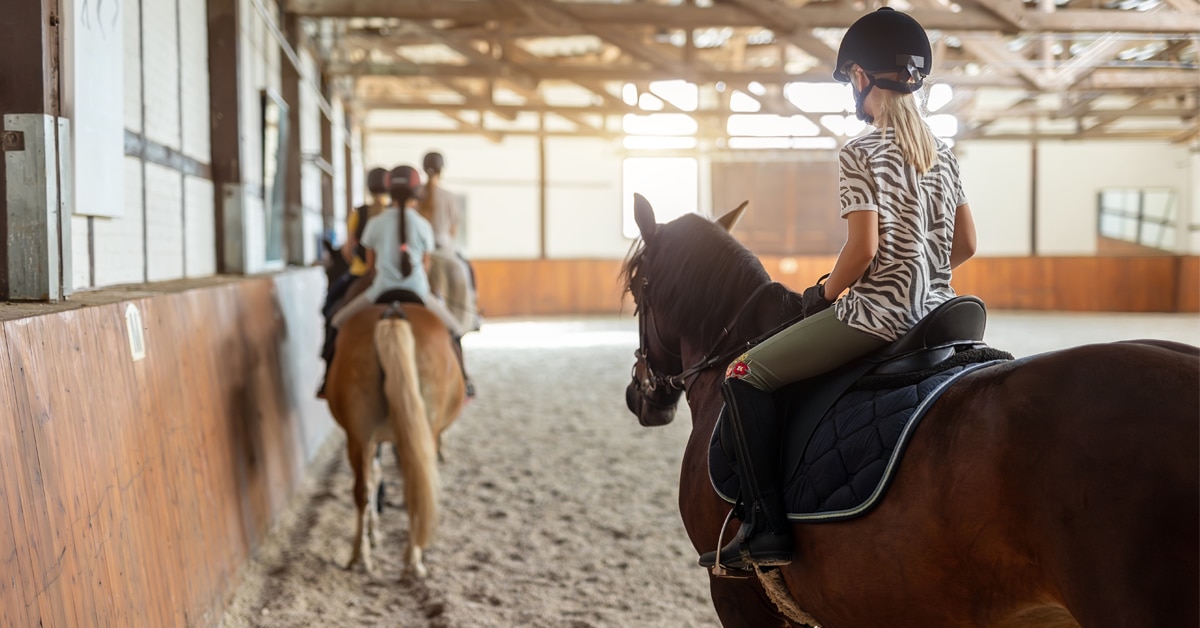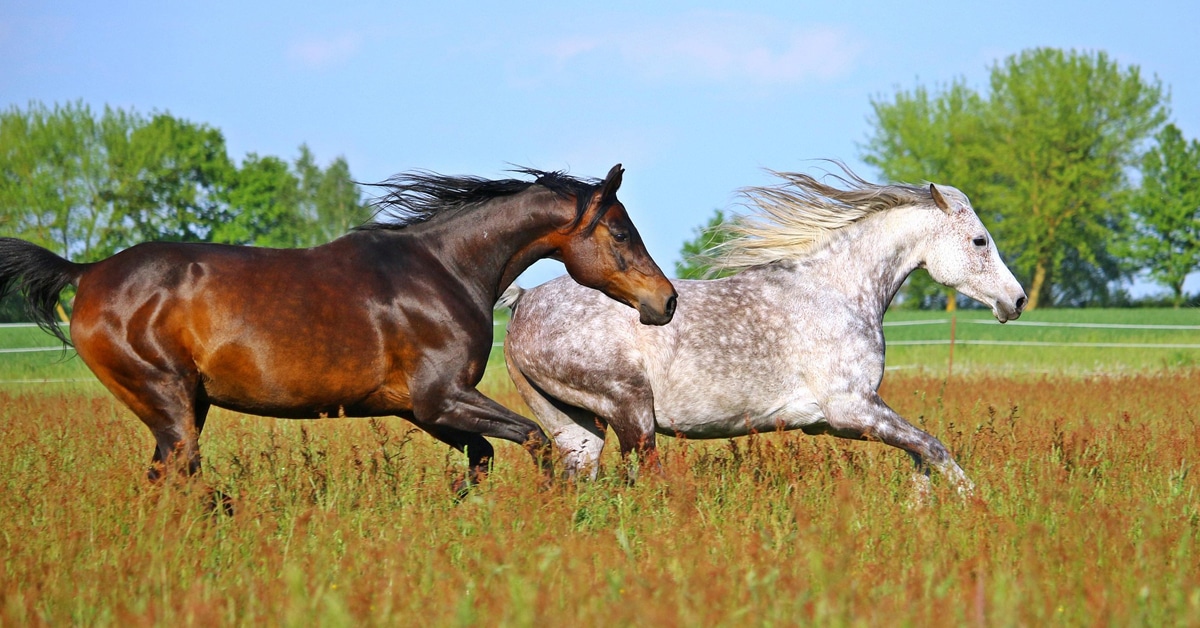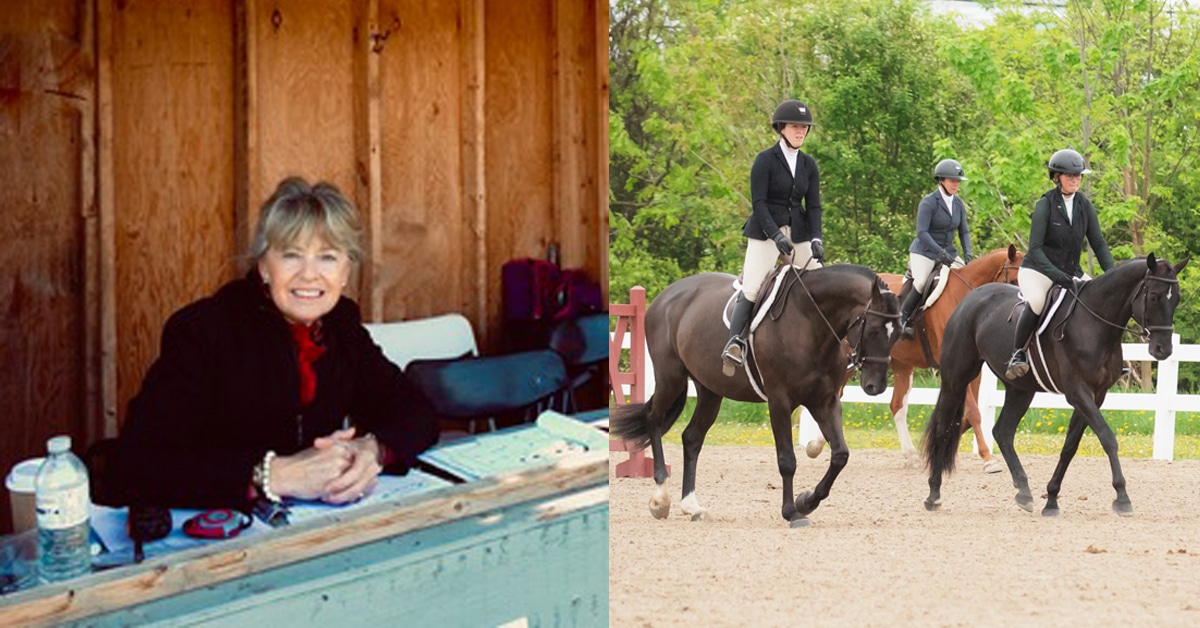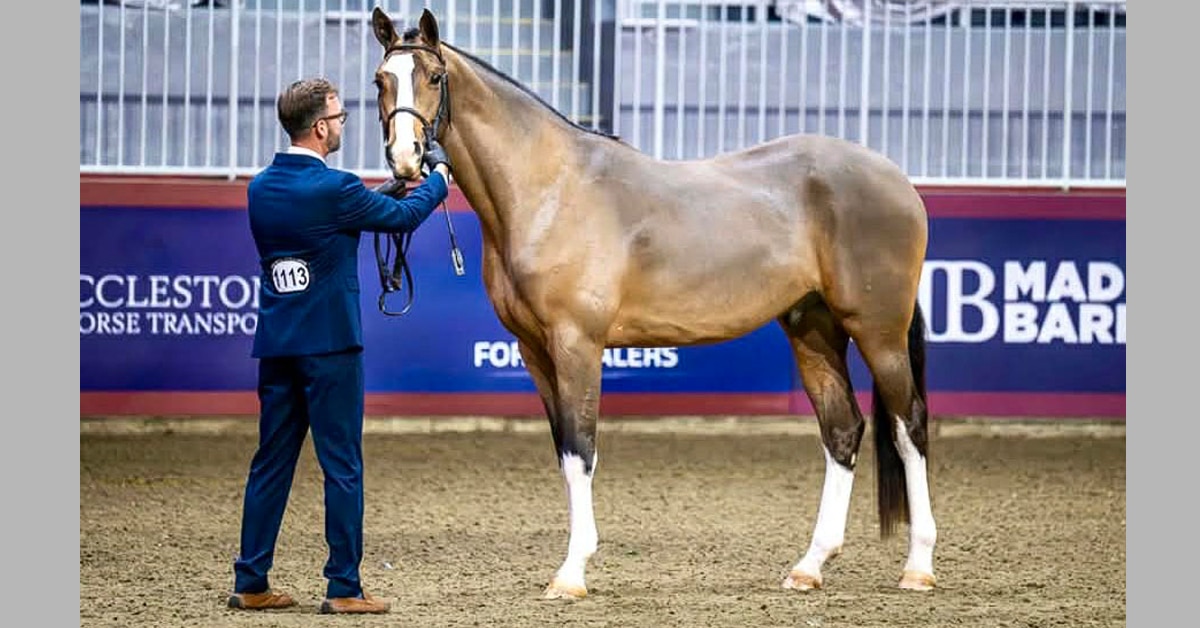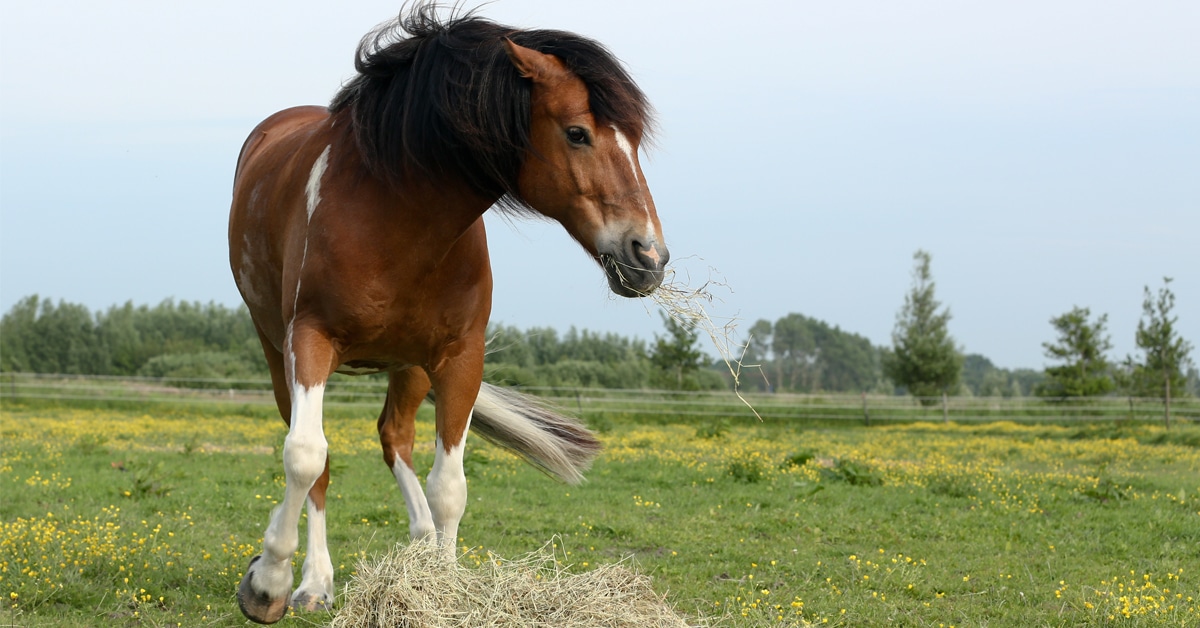Ronnie Davidson passed away on March 16, 2025 at the age of 79. The following is a rerun of an article first published in the May 2014 issue of Horse Sport.
***
Ronnie Davidson of Richmond, ON, has been a familiar sight in breeding line class rings – more often than not at the front of the pinning order – since the 1960s. He estimates that during his long career he has handled “in the hundreds, maybe a thousand” horses for clients. “When I was younger, I had a horse in every class. I spent all day running in and out, showing babies and the whole works. If they had a pulse, I’d show them!”
Showing horses on the line was just a natural progression for Davidson. “I was in the Pony Club in 1955 and riding for other people at Mayberry farms, a big boarding and breeding stable. I was showing conformation hunters, where you have to ‘strip’ them and take them back in the ring, in the ‘60s on until the mid-’70s.”

(Left) Heartbreaker Heff, grand champion TB mare at the 2012 Royal, strikes a winning pose for Davidson ‒ illustrating how he shows the horse with a relaxed lead, and still manages to keep the horse in position and out of his space. Can you spot the ever-present carrot? (Right) Davidson prepares to show Sweet Be – the 2013 GG/LG Cup winner – to the judge. By this point, he will have walked and set up the horse at least three times. Davidson says Sweet Be had one of the best coats he has ever seen in all his years of showing line horses. (Lynn Cassels-Caldwell photos)
In 1975, “I lived at Dwyer Hill Farms and showed their horses for them, Tommy Jay and I. I was showing for other people as well – Copanspin Farm in Dunrobin, Ted Leggatt owned that. He had two stallions and I was showing them, too.” Along the way, Davidson also became a blacksmith. “I started in 1965 and I’m just doing a few now,” he says.
Last year’s Royal Agricultural Winter Fair marked an incredible 10th Governor General’s Cup win for Davidson, this time with Marie-Claude Lavallee’s lovely filly Sweet Be. The Royal has always been Davidson’s favourite venue. “There is more competition there than anywhere else we go, except for Devon. You meet people that you only see once a year, so it’s like a reunion. I like the crowd in the little ring – it’s easy to show the horses, because they’re all up: you’ve got the Clydes walking around outside there and everybody’s sharp.”
Too sharp, sometimes.
“Waterskiing around the ring. I’ve done that before,” he says, laughing. “It’s not easy on the heels.”
While Davidson doesn’t only show Cup horses these days, he can afford to be a bit choosy.“I had a really nice mare, Aritzia, I showed for the owners. I always have a couple of yearlings and two- or threeyear- olds. I really pick and choose now.”
He has noted a lot of positive changes in Canadian Sport Horse conformation and talent over the years. “The athletic ability has really changed. Before, you almost rolled one into the ring and rolled it out. It didn’t really matter how well it moved. You see the horses now that are winning and going on to bigger things, like Popeye. They’re better-bred, too. That Aritzia filly, you should see her going – she’s got an unbelievable mind. She’s so good looking – there’s nothing she can’t do.”
Tips of the Trade
Jogging: Teaching a baby to trot smartly beside you is not something you begin working on a week before their first show. “Do everything, every day,” advises Davidson. “Don’t do it when you’re turning them out in the morning, but when they’re coming in at night if there’s a nice little road or laneway. That time of day they’re not feeling as sharp as they would be in the morning. Start jogging them towards the barn, nice and easy though – everything has to be really easy and quiet. You don’t want the baby to start bucking and kicking and going sideways.
“I never jog a baby really fast, like at an extended trot. When they get to the shows they will do it – all you have to do is extend yourself.”

Teaching them to respect the handler while jogging is also important during early lessons. “I draw an invisible line in front of them; they don’t cross that line – you stay there and I stay here. I stay two feet in front of them. I don’t like to be too close, there’s no reason for it. If they move ahead, you just give them a little tap with one of those feathered whips and they’ll back up. They’re not complicated if you take your time.”
Setting up: When teaching a youngster, “I don’t worry too much about the front feet – how they [the judges] want one farther up than the other. As long as they’re straight, I just go with the left hind back a bit.”
Davidson says that in the ring, too much fussing wastes valuable time. “You see people playing with the horses, backing them up while the judge is looking, and bringing them ahead. Meanwhile, you’re losing all that time to be posing them. When you’re backing them up they usually have their ears pinned, so they’re not looking as good.”
Body condition: While you don’t want to show musclebound horses, you also don’t want them to be too soft. “I saw Aritzia when she was about a month old and I said ‘I love her, let’s go,’” says Davidson, who went on to explain how they prepared her for her first Royal appearance. “As a weanling, we didn’t walk her or anything; she was just out with the mare. When we took her to the Royal she was seven months old and we only took her off the mare the month before. If you wean them at three or four months old, you end up with a big pot belly.”
Aritzia’s education was on-going. “When she was a yearling, every day I would walk her for 40 minutes. That’s all they need every day, and it’s great for them. You can tell the difference between the ones who do and the ones who don’t.” The benefits of all that daily handling also pay off. “I could walk her down the Gardiner Expressway, and as long as she was standing beside me she cared about nothing.”
Turnout: Number one, Davidson wants to see a professional braid job and a beautiful coat, preferring a ‘natural’ coat to a clipped one. “Don’t clip [it makes the coat look mousey, especially chestnuts], just use lots of blankets and a hood starting at end of September. You can see the difference,” he points out, adding that Sweet Be had one of the best coats he had ever seen. “Most people are too lazy to do it. They say ‘losers won’t do what winners will to win.’”
He also suggests that if you’re going to use a false tail, make sure it is age-appropriate. “I showed a two-year-old and they brought it to the show with a false tail almost touching the ground, like a 10-year-old.” He is not a fan of the false tail, saying, “Some of them are ridiculous.”
In the ring: Make a confident entrance. “I like to walk in at a really nice forward walk, let them relax with their ears up, just a nice athletic-looking walk.” Do not set your horse up for the judge too early; wait until he or she is looking at the horse before you. Davidson says that while the handler can accentuate the positive points of their horse, it is tough to minimize any weaknesses. “It’s so hard these days with the judges, they’re so sharp.” If someone calls him to look at a horse that’s not perfect, he may simply steer them away from conformation classes, advising “just ride them instead.”
Can a horse drop down in placings because he is shown badly? “In the Cup, for instance, the judge likes the top three, but is not really sure which one he really likes the best. You [the handler] have to convince him, if all else is equal.”
How to achieve ‘the look’: “I always have a carrot – people say you can’t do that because then they want to bite. I don’t find they do. They want the carrot, but they will have it when I give it to them. That’s really important.
“If the carrot is 5-6” long you can hold it in your hand and just let them take a bite of the end of it. It doesn’t have to be much, an inch, and then they’re happy with that for a while.
“If I’m in the Cup, and I’m the last one to be judged, I will stop and pose my horse two or three times before they get to me. I stop the horse, get him set up and standing tall, give him a bite of the carrot, and then walk him. Then I do it again. By the time the judge comes around, the horse has already been stopped and posed three times.”
Davidson refers to the old days where pretty much anything was used to get those ears up. “I used to use a Bic lighter; now there are no more Bics or doggie toys or squeakers. Cellophane works once or twice, then you can’t fool them any more. Carrots work best.
“They need a reward – you can’t ask them to do something for nothing.”
The Latest

